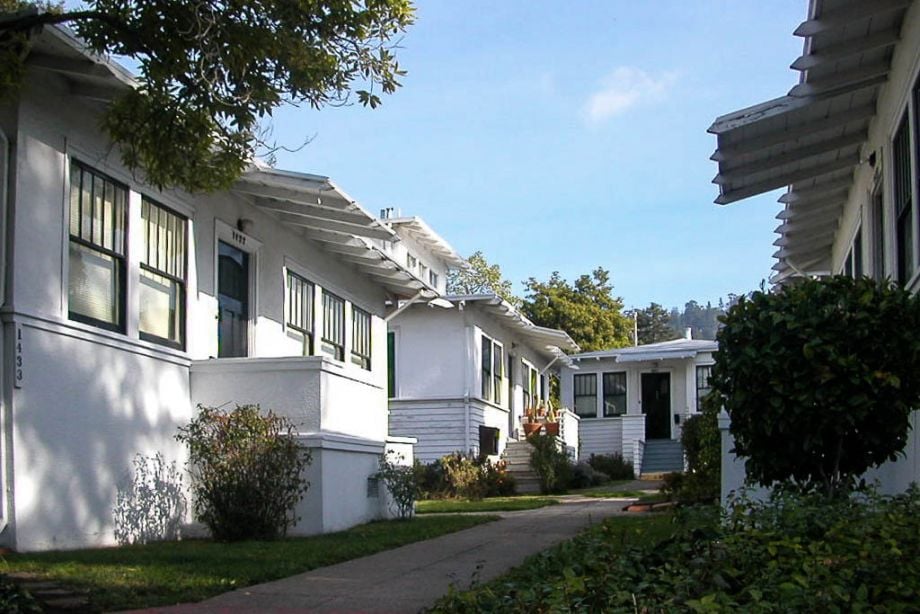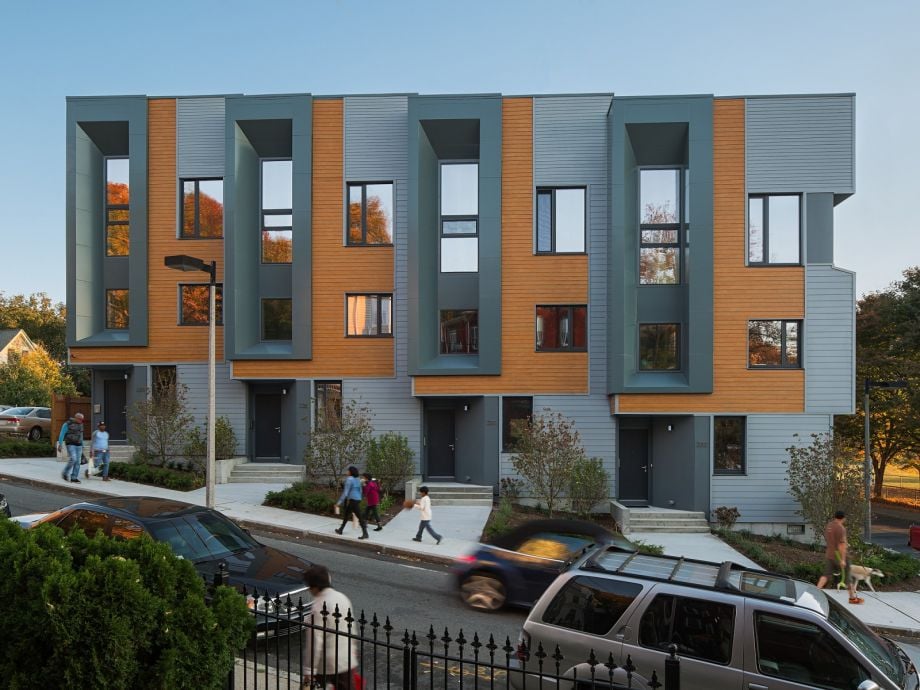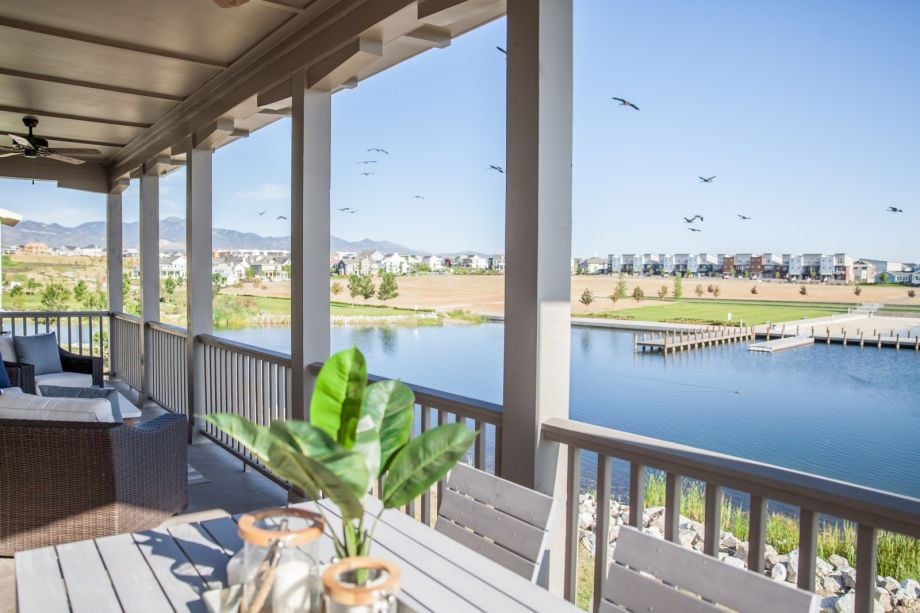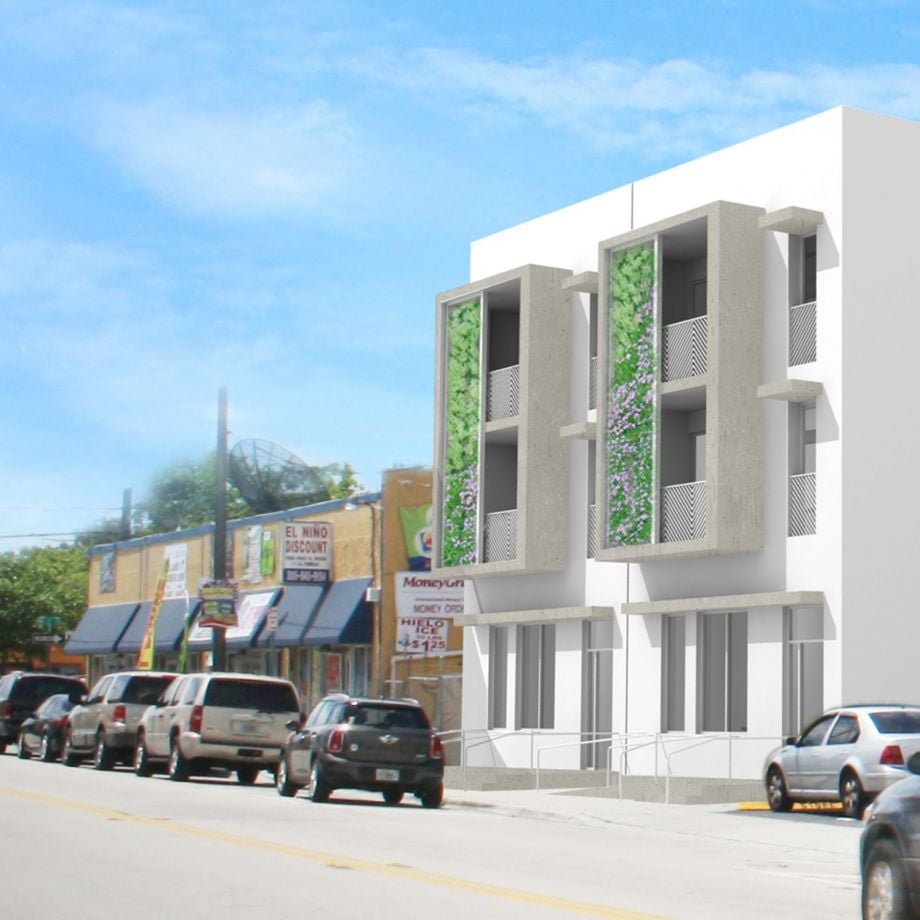Are You A Vanguard? Applications Now Open
(Photo by Jeffrey Cross)
This is your first of three free stories this month. Become a free or sustaining member to read unlimited articles, webinars and ebooks.
Become A MemberThe house I’ve lived in for almost 10 years isn’t a single-family home or an apartment in a tall building. It’s something in between, a two-story “condominium townhouse” on wooded grounds in a suburb of Washington, D.C. There are 166 townhouses in my complex, and whenever one is listed for sale, it gets snapped up. This is a popular place to live.
But the funny thing is, it shouldn’t be — not if you trust the conventional wisdom about real estate. The townhouses here are 75 years old and they look it. Built quickly and cheaply as military housing during World War II, they’re small (in the range of 1,000 square feet) and architecturally plain. Except for a few that have undergone renovations, they lack pretty much every feature now deemed essential in a “nice” American home: kitchen islands with granite countertops, walk-in closets, bathrooms galore.
My family doesn’t have a yard. We have a patio out back, and share a landscaped plaza with dozens of our neighbors. We don’t have a dedicated parking space. Yet I’m confident that if we put the house on the market tomorrow, it would sell, and fast. How can that be?
Just a few years ago, a name emerged for the kind of community I live in. Neighborhoods like mine represent “the missing middle” in American housing, say architects and planners: not a big subdivision, not a high-rise apartment tower, but a middle option in terms of scale and density.
We used to build lots of in-between housing in this country: rowhouses, duplexes, apartment courts. In other countries, the middle is still the default. Britain is the land of the semi-detached house; the Netherlands, Germany and Denmark have dense, low-rise (and attractive) housing of various kinds. But the United States stopped building this way decades ago.
The result, critics say, is huge unmet demand from millions of people whom our bifurcated housing supply doesn’t serve. Young families are priced out of new single-family homes, which now have a median size of a whopping 2,453 feet, but can’t squeeze into studio or one-bedroom apartments. Older adults want to downsize and economize without giving up their own front door or a patch of garden. Lower- and middle-income Americans struggle to pay climbing rents while new housing is increasingly marketed as “luxury.”
As of 2014, according to the U.S. Census Bureau, 63 percent of the nation’s 117 million occupied housing units were detached homes. Another 13 percent were apartments in buildings with 10 or more units. Only about 19 percent of America’s housing stock is composed of all the types in between, from attached single-family (aka townhouse) up to nine-unit multiplex. It hasn’t always been like this — as recently as 1986, 20 percent of all new single-family homes sold were attached, rather than detached; by 2014, that share had dropped to 10 percent.
If we had a richer variety of housing options, we might be able to solve a number of problems.
First, it would give Americans more choices about where and how to live. Many people — especially growing demographic groups like single people and couples without children — would be relieved to say no to the large houses and luxe condos currently being offered them, and find a home or neighborhood they prefer. Restoring the missing middle would also increase the supply of housing in tight markets, putting the brakes on rising rents.
Second, because these forms of housing are quite dense, they would help communities meet the threshold where transit and neighborhood retail become viable: In other words, they would foster the walkable, 24-hour neighborhoods that Americans are clamoring for, but often can’t afford. Sixteen units per acre is that density threshold, according to many planners. Missing-middle housing ranges from 16 up past 50 units per acre, enough to undergird lively, connected, pedestrian neighborhoods, and wean some residents off their cars. These neighborhoods would also have the virtue of being mixed-income because of their diverse housing.
Third, if you favor traditional urban design, the missing middle yields the pleasant massing of Cobble Hill, Brooklyn, rather than the spiky skyline of Manhattan (or the desultory sprawl of some New Jersey suburbs). To New Urbanists, many of whom loathe both modern skyscrapers and sprawl, the missing middle promises “goldilocks density,” as the writer Lloyd Alter terms it: not too high, not too low, but just right.
So why isn’t more of it getting built?
If you’re not familiar with the term “missing middle,” you’re not alone. Before this year, “I’d never heard of it,” admits Stockton Williams, director of the Terwilliger Center for Housing at the Urban Land Institute. “The term really was coined by that guy, just three or four years ago.”
“That guy” is Daniel Parolek, an architect and urban planner in Berkeley, California. Parolek heads a small firm called Opticos Design, and his resume bursts with impressive New Urbanist credentials: working for Robert A.M. Stern, collaborating with Leon Krier and Elizabeth Plater-Zyberk, writing form-based codes for cities around the country.

Historic bungalow courts used to be built often in Southern California, but the model has given way to single family homes. (Credit: Opticos Design)
Parolek says an interest in overlooked housing types has been “inherent” in the work of Opticos since he founded the firm in 2000.
“Opticos’ first major project, which started in 2000, was a master plan for Isla Vista in Santa Barbara County,” he says. It was the first time they raised the concept of the missing middle (at that point unnamed) with community members concerned about high-density infill. They walked the group through a downtown neighborhood in Santa Barbara, looking at historic bungalow courts and courtyard apartments, as well as newer housing. “The group loved one of the courtyard apartment buildings, so we stopped to talk about the characteristics of that type,” Parolek remembers. “They said they wanted infill like this in Isla Vista.” That infill, it turned out, had a density of 40 dwelling units per acre—twice as high as what residents thought they would be OK with.
The lightbulb went on for Parolek and he began to think about the housing styles that he knew from his childhood growing up in Columbus, Nebraska.
“My great-grandmother lived in a small duplex two blocks off of the main street in the small town I grew up in,” he says. “My great-uncle lived in a stacked duplex in a small town in Iowa. I remember visiting them in these homes.”
These traditional urban forms had worked so well for his family. Why wasn’t anyone talking about them? A few years ago, Parolek started to lobby for midscale housing in earnest, and came up with the catchy alliterative name. At the time, Christopher Leinberger, an influential real estate developer and senior fellow at the Brookings Institution, was extolling the rise of walkable urban places (“WalkUPs,” in Leinberger’s parlance), and Arthur C. Nelson, a housing analyst at the University of Utah, was predicting that a wave of small households would reshape the country’s housing preferences. Parolek took note.

Daniel Parolek’s definition of “missing middle” housing encompasses a number of housing varieties that used to be common in American cities: townhouses, duplexes, triplexes, two- and three-flats, and bungalow courts, among others. (Credit: Opticos Design)
In some of the cities where Opticos works, officials worry about how to retain young people and baby boomers. Despite the considerable progress urbanists have made since the 1990s in figuring out how to build large mixed-use centers, Parolek realized that when you go down a notch in scale, things get trickier.
“Historically, as planners, we do a really good job of regulating conventional suburban development,” explains Parolek, who commutes by bike to Opticos’ office in a three-story building in downtown Berkeley (Walk Score: 79). “And over the past five to 10 years, we’ve figured out the larger-scale TOD [transit-oriented development].” But what about how to build a successful low-rise, mixed-use block, or a 12-unit apartment building? This is the blank that Parolek hopes to fill. He has given dozens of presentations on the missing middle around the country, including to influential advocacy groups like AARP, and Opticos is the lead consultant on Austin’s current initiative to revise its land development code.
Parolek and Opticos define the missing middle as “a range of multi-unit or clustered housing types compatible in scale with single-family homes that help meet the growing demand for walkable urban living.” This translates to a number of housing varieties that used to be common in American cities: townhouses, duplexes, triplexes, two- and three-flats, and bungalow courts, among others. Parolek prefers missing-middle structures not to be taller than two and a half stories — the better to blend with single-family neighborhoods and avoid opposition — but he recognizes the need for more three- and four-story buildings, too, which he calls “upper missing middle.” Generally, Parolek says, missing-middle apartment buildings have no more than 14 units, but he stresses that the height, depth and width of the building are more important for compatibility than the number of units.
It can be hard to visualize the missing middle precisely because it has been missing so long, left behind in the decades after World War II as single-family subdivisions ate up the land around U.S. cities. But the period between about 1870 and 1940 was the heyday of medium-scaled housing in American cities. In Chicago at the turn of the 20th century, two-flats (two-story houses with an apartment on each floor) multiplied; for that city’s Eastern European immigrants, buying a two-flat and renting out half of it was a rung on the ladder of social mobility. Rowhouses, which speculative builders could put up quickly and tailor row by row to different kinds of buyers, proliferated in Brooklyn, Baltimore, Washington, D.C. and Philadelphia.
In Boston’s streetcar suburbs between 1870 and 1900, single-family homes were just one form of housing in a diverse mix. According to one historian’s analysis, the roughly 2,000 single-family homes built in Roxbury, West Roxbury and Dorchester during this period were far eclipsed by two-family homes (4,000) and “triple-deckers” (6,000). Bungalow courts, which cluster one-story dwellings around a courtyard in a best-of-both-worlds compromise between private and communal, spread across Southern California from the 1910s through 1930s.
Then came the war, the FHA-backed mortgage and Levittown, and that was more or less the end of that.
Other housing experts interpret the missing middle more broadly than Parolek, viewing it in terms of price point more than architectural scale. Parolek would argue that these things overlap anyway: Midsized housing is “affordable by design,” he says, thanks to its efficient use of space, communal features and recommended location near public transit, which obviates the need for a car.
The relationship between housing type and price is fuzzy. Generally, missing-middle housing is cheaper than average, but some of that comes down to age — it tends to be older and therefore in worse repair. In new construction, low square footage and (potentially) the lack of a garage or yard should translate to lower prices, assuming the location is not prime — which it is in Berkeley and some other missing-middle exemplars, partly an effect of the relative scarcity of such neighborhoods. In 2014, the median price for new, detached single-family homes sold was $284,500, and attached homes came in only slightly cheaper at $267,800. (The size of townhouses has ballooned, just like that of detached houses.)
It can be hard to visualize the missing middle precisely because it has been missing so long.
Experts do agree that such housing is difficult to build today, and they point to the same culprits. Number one: zoning. The prevalence of low-density residential zoning gives developers few opportunities to build big(ger), which exacerbates another problem, the high cost of land.
So where developers can build big, they’re not going to squander that chance on a measly three stories if they can help it.
“If you have a big site, you tend to go for the absolute maximum you can,” says Alan Mallach, a prominent urban scholar who is a senior fellow at the Center for Community Progress. “And you can’t get small sites because there’s no suitable zoning.”
Given the costs of land, labor and materials, plus conforming with regulations, housing that is midscaled or midpriced — or both — often doesn’t pencil out for developers. In places where zoning allows for a large building, maxing out on height and footprint yields a better, safer return. As does going “upscale,” with nice finishes and amenities. The extra investment is small, but the rent or sales differential, Mallach notes, can be significant.
As the middle has dwindled to a niche, financing it has become trickier. Projects in the range of four to 49 units generally have a hard time finding backers. “In some cases, it’s a little bit of a circular thing,” Williams, of ULI, explains. “The developers proposing … missing-middle developments are not necessarily the same type of developers that would do larger properties. They tend to be smaller enterprises, perhaps with less strength in their balance sheets.”
Finally, there’s the slippery role of public sentiment. Christopher Leinberger is right when he says the demand for walkable communities, whether in cities or suburbs, exceeds the current supply; places like Evanston, Illinois, and Bethesda, Maryland, are expensive for that reason. Parolek estimates that the U.S. needs another 35 million units of multifamily housing to accommodate all of the country’s carless millennials, Marie Kondo-ing boomers and dissatisfied suburbanites.
Yet it’s one thing to acknowledge the need, and another to look on as someone builds those units next door. NIMBY opposition to development projects is still often fierce, even as cultural preferences shift toward higher-density living. There is no better illustration of that than what happened in Seattle over the summer.
In 2014, Seattle’s Mayor Ed Murray asked a citywide task force, the Housing Affordability and Livability Committee, to find ways to ease Seattle’s severe shortage of affordable housing. In July, the committee released its recommendations. One of them was to allow the construction of duplexes, triplexes and other multifamily structures in Seattle’s single-family zones, which cover about 65 percent of Seattle’s land area. The new structures would have to come under the current height limit.
Reaction was swift — neighborhoods erupted in protest. With elections approaching, city officials and candidates backed away from the controversial recommendation. One candidate sent out a mailer with a picture of a bulldozer poised to maul a single-family home: “City Hall is coming our way,” it read. Only two weeks after the report appeared, Murray dropped the upzoning idea.
A paradox of the missing middle: Its biggest advantage would seem to be that it makes density less scary, even palatable, for owners of single-family homes who fear being crowded by tall buildings or hundreds of new neighbors. But many homeowners remain so immovable on the issue of local development that in-between housing doesn’t always go where it would work best as stealth density. That means it’s mainly going where it’s already expected (and zoned for) — and cities are losing an opportunity to create more housing and knit suburban-style neighborhoods with denser development nearby.
Hard-line urbanists might grumble that the missing middle just kowtows to Americans’ fears: Cities need more housing, and if people are scared of high-rises, tough for them! In fact, these forms of housing could increase density in low-rise neighborhoods substantially while still allowing urban cores to go tall. (“I’m not going to advocate that it’s the highest scale a city should go to,” Parolek says.)
Missing-middle housing does slip past the barriers, usually in places where it fits with a local vernacular. Architects are designing it, often in more contemporary styles than Parolek’s historicist examples suggest. (Parolek, however, maintains that his missing-middle campaign is “totally style neutral.”) In Southern California, the architects Lorcan O’Herlihy and Barbara Bestor have designed new iterations on courtyard apartments and small-lot homes. Bestor’s Blackbirds, a cluster of 18 small-lot houses in Echo Park, can’t be called affordable at upwards of $750,000 each — yet 500 people visited the first open house.
Based in rowhouse-rich Philadelphia, Interface Studio Architects innovates on missing-middle typologies. The firm’s portfolio includes an L-shaped three-flat, rotated duplexes (which are subsidized housing), a half-block of attached homes with space for a corner store, and net-zero-energy townhouses. Brian Phillips, a principal of Interface, says it’s no coincidence that the firm works in cities like Philly, Chicago and Boston, where these types are already well established.

In 2013, ISA designed these four 3-bedroom attached townhomes with rear yards and terraces in Boston. They are also net zero energy. (photo by Sam Oberter)
“One of the reasons why we’ve done a lot of that work is because our home turf is so well tuned to it,” Phillips says. “I think there’s two reasons for that tuning: One is buyer expectation — in other words, people in Philadelphia don’t expect to be in a single-family home or a high-rise, necessarily.
“The other thing,” Phillips continues, “is the excruciating affordability of Philadelphia. Even though the market is strong, you can still acquire land at a reasonable price. There’s just not all that pressure to build high density all the time.” (Even so, Interface’s market-rate houses sell for well above the median home price in Philadelphia.)
Architects touch only a fraction of new housing projects, of course, at the high end of the market. Builders and contractors are creating their own missing-middle housing — and much of it wouldn’t please either a traditionalist like Parolek or a modernist like Phillips.
In the outer reaches of Houston and Phoenix, says Mallach, you can see affordable new townhouses and garden apartments going up. The catch is that they’re far from urban centers, out where land is inexpensive and demand from affluent customers is weak. Zoning is loose (in Houston, famously, it’s nonexistent) and regulations are light. These developments meet a need, but they’re cookie-cutter and don’t come anywhere near a New Urbanist vision. “They’re very much developments,” Mallach notes, rather than planned communities.
Missing-middle infill is going into cities, too — again, not always in a form that designers will warm to. Back in 2008, Newark, New Jersey, convened an expert panel to address its scourge of “Bayonne boxes,” multi-unit houses crammed onto narrow lots, often with parking pads at the front and mere inches between houses. Many locals reviled these — including then-Mayor Cory Booker — and the National Endowment for the Arts agreed, giving the city a $25,000 grant to research alternatives. The city adopted new urban design standards to rein in some of the houses’ more egregious flaws. Yet, officials recognized that for all their ugliness, Bayonne boxes play an important role. They provide affordable housing, mainly for immigrants, and allow extended families to live together in adjacent units. Yes, they’re often built on the cheap, but that’s one reason why they’re affordable.
Williams and Mallach speculate that the middle is perhaps less “missing” than at risk, at least in some places. Mallach cites a recent Washington Post article that compares the prevalence of housing types in different metropolitan areas. Townhouses up through 19-unit buildings form a decent chunk of many cities’ housing stock (admittedly, more so in Philadelphia and Baltimore than in Detroit or Seattle). In Chicago, two- to four-unit buildings still make up 27 percent of the city’s housing supply, nothing to sniff at. Preserving older midsized housing may be just as important as building more of it.
“It really is an urgent issue to preserve the affordability of the existing, non-missing middle,” Williams says. “The middle’s not totally missing. But what we do have is that middle tier [getting] acquired and repositioned, or [replaced with] a denser, larger building.”
There is new missing-middle housing in the U.S. that meets high architectural and urbanist standards, and at a reasonable price. Two endeavors proceeding at vastly different scales in different cities show real progress.
At one end of the scale is Daybreak, a 4,000-acre planned development in South Jordan, Utah, about 20 miles from Salt Lake City. The environmental ambitions behind Daybreak are high, and come from an unlikely source: the global mining conglomerate Rio Tinto, which operates the massive Bingham Canyon copper mine and owns the land on which Daybreak sits. In a gesture of stewardship 15 years ago, the company hired the famous planner Peter Calthorpe to design a pedestrian-friendly “complete community” with schools, shops and office buildings as well as homes, all of them sustainable.
Daybreak now has close to 15,000 residents, and for a mega-suburb owned by a mining company (with some land that has undergone remediation), it has a legitimate claim to being green. All the homes are Energy Star-certified, and the public buildings meet LEED standards. The town has avoided becoming a dormitory suburb thanks to the inclusion of significant office and retail space. In 2011, a light rail began running between Daybreak and downtown Salt Lake. A recent academic study found that 88 percent of children walk to school at least once a week. The community is popular with homebuyers; its website boasts that one out of every six homes sold in the Salt Lake Valley is in Daybreak.

Attached townhomes and condos are visible from the porch of a single family home in the Daybreak planned community in South Jordan, Utah. (Photo by Rio Tinto Kennecott)
Daybreak contains a range of missing-middle types: townhouses, stacked condos, duplexes and detached houses in a “cottage court” arrangement. Stephen James, the town’s manager of planning and community design, estimates that roughly 25 percent of current construction is townhouses, and another, smaller segment is made up of the other niche types. (The town won’t be completely finished until about 2035.)
“When we started here, there were no townhouses at all in South Jordan,” James says. “We couldn’t just come in and do whatever we wanted. We had to think through … how to enable this over time.” James credits the town plan with providing a framework — he compares it to a car chassis — so they could begin with “the loose stuff” and work inward, building a denser center as the comfort level rose. Home appraisers were wary at first, because they’d never encountered so many housing types in a single community, but strong sales soon changed that, according to James.
Townhouse clusters of 25 units an acre “aren’t even a problem [to build and sell] now,” James says, and a project that’s on the boards will have 60 units an acre. “We’ll continue to build intensity around the town center so we get that walkable, energetic character.”
At first, Daybreak’s creators assumed the cottages and townhouses would draw a combination of empty nesters and entry-level buyers. Few of the former turned up, but the latter did in droves. Most of Daybreak’s homes, regardless of type, are well-turned exercises in traditional styles like Dutch Colonial and Arts and Crafts bungalow. But there’s a smattering of modernist homes too. Condos and townhouses range from the high 100s to the high 200s — not a steal, but also not bad for a metropolitan area where the median home price is $254,000.
Daybreak shows what a single, powerful landowner can accomplish with custom-made zoning and an unusual degree of control over details (although Rio Tinto’s subsidiary Kennecott Land reports to the South Jordan planning commission, the company, not the city, oversees design review).
Meanwhile, across the country, one man has spent years promoting underrepresented housing types in his city, and it’s paying off.
Five years ago, Andrew Frey was working in real estate law in Miami when he became interested in not just what local developers were building (high-rises and rambling subdivisions) but what they weren’t. South Beach and Little Havana are great neighborhoods, he thought, so why isn’t anybody creating more like them? His theory: “Maybe we aren’t getting the missing middle because people can’t picture it.” He established a nonprofit called the Townhouse Center and started to do research. He also co-taught a course in the architecture school at Florida International University (FIU) in which master’s students design a new, small urban typology for Miami.
Next, Frey approached an architect experienced in missing-middle housing and asked him to design a prototype for Miami. The architect he chose was Phillips, who created a concept called “High Res Miami” in 2013. It was exciting — a three-story modern townhouse that could adapt to various uses and configurations — and unbuildable, Frey soon realized. Fitting the structure and the required parking spaces onto a 50-foot lot was physically impossible. Frey talked to the planning department about an exemption and got nowhere.
Then, “I tried to think like Robert Moses,” Frey recalls. He rallied a broad coalition of supporters — neighborhood merchants, architects and developers, the Miami Coalition for the Homeless — and swayed a city commissioner. After wrangling between the commissioner and the city’s planning department, with the city attorney stepping in at one point, the planners wrote the small-lot exemption into a larger parking ordinance.
Last October, the ordinance passed, and now Miami has a parking exemption for buildings of 10,000 square feet and less, as long as they are located in transit-served areas and not within 500 feet of single-family zoning.
Frey recently started his own development firm, Tecela. The day I talked to him, he had just closed on the purchase of his first lot, where he plans to build a 9,000-square-foot, three-story, eight-unit apartment project, designed by Jason Chandler, chair of the architecture school at FIU. It wouldn’t be possible without the new ordinance. There are still other regulatory hurdles, he says, and permitted densities are too low for his liking. The new units will cost about 10 percent more than the neighborhood’s median price per square foot, he says.

Frey plans to build a 9,000-square-foot, three-story, eight-unit apartment building (rendering shown here). (Credit: Andrew Frey)
“The playing field will always be slightly tilted in favor of big development,” Frey says. “That’s never going to go away.” But tweaking that imbalance is doable, as his efforts make clear. Before the parking exemption, families that owned small parcels in Little Havana couldn’t utilize their land. Now, Frey maintains, they can participate in urban revitalization rather than doing the only thing they could before, which was sell up and move out.
Frey makes a “double bottom line” argument. The missing middle can distribute ownership in the city, he says, allowing more people to buy small lots and small units, and sometimes to buy an extra unit and rent it out to build wealth — much like the Czech owners of two-flats in 19th-century Chicago. His own project in Little Havana is split into two townhouses. If he decides to sell one to a resident-landlord, he’ll be distributing ownership more broadly — and for him, having the option to sell part of the project is a cushion against risk. In other words, it’s a win-win that’s not achievable with larger construction.
Could restoring the missing middle be a strategy for controlling gentrification? It seems Pollyannaish to think so; at this point, the supply is still so hampered by outdated policies. But the idea of the missing middle is catching on, notably in cities where the cost of entry to homeownership has become impossibly high (like Portland). I look around my neighborhood and see homes that remain attainable for teachers and social workers. Maybe Frey is on to something.
Our features are made possible with generous support from The Ford Foundation.

Amanda Kolson Hurley is a freelance writer in Silver Spring, Maryland. Formerly an editor at Architect and Preservation magazines, she has contributed to a wide range of publications including the Washington Post, Architectural Record, The Architect’s Newspaper and the Times Literary Supplement.

20th Anniversary Solutions of the Year magazine